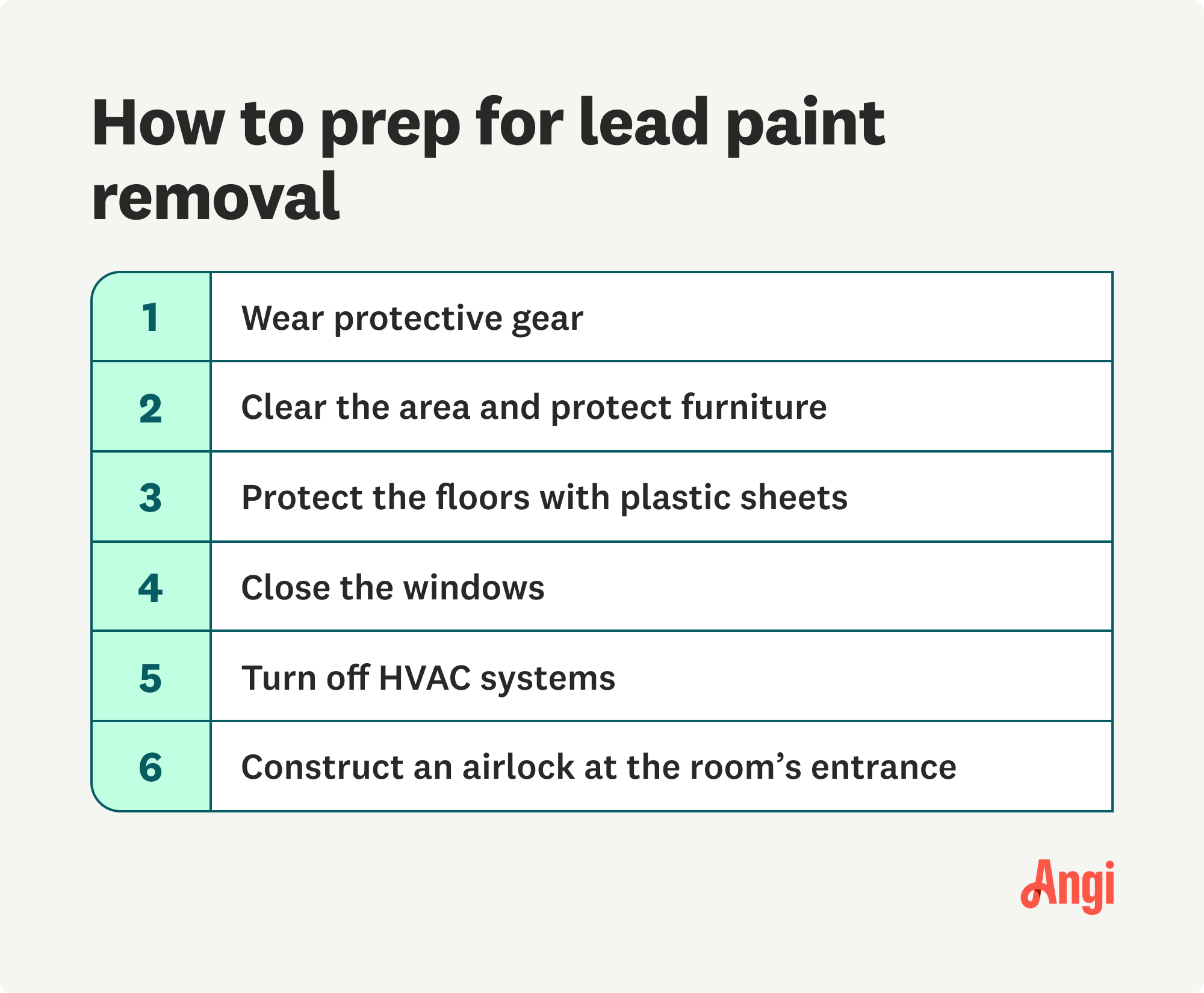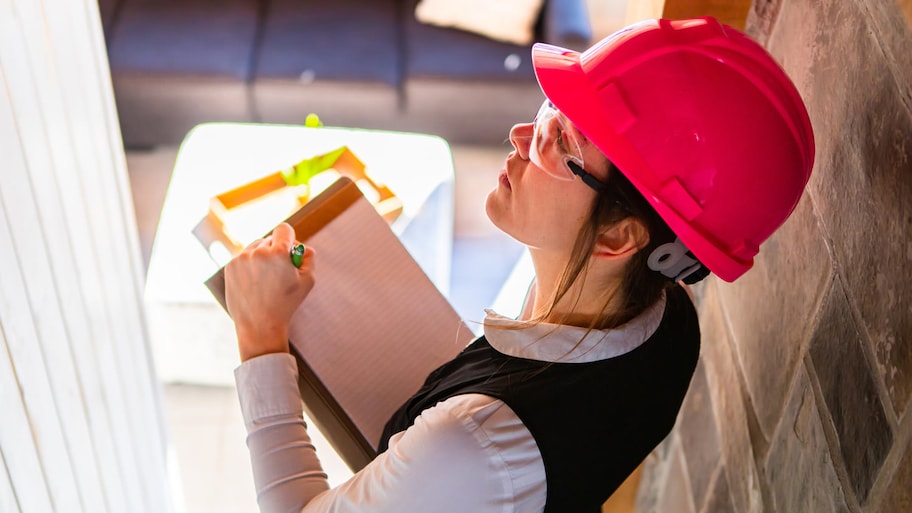How to Remove Lead Paint: Every Method, Explained
Was your home built before 1978? Be on the lookout for the telltale signs of lead paint


Imagine this: You finally found the home of your dreams, and you and your family can’t wait to move in and start making memories. But once you get settled, you notice chipped paint, and alarm bells start ringing. Did you just discover lead paint in your home? Don’t let fear get the best of you. Eliminating lead paint from your new place of refuge is entirely doable, and we’ll walk you through every step. Learn all about how to get rid of lead paint and how to know if lead is in your home in the first place.
Why Is It Important to Get Rid of Lead Paint?
Lead paint can cause lead poisoning and a wide range of health problems, and children are especially vulnerable to the effects of lead poisoning. The presence of lead paint in your house can be dangerous for everyone when ingested or inhaled, potentially causing damage to the kidneys, nerves, and blood.
Lead paints were banned for use in homes in 1978. However, if your home was built before that time, it might still have lead paint inside. If the paint in your home tests positive for lead, contact your local building department immediately and then schedule an appointment with an Environmental Protection Agency-certified lead removal specialist.
Identifying Lead Paint
Before you learn how to get rid of lead paint, it’s helpful to know the signs of lead paint in your home. Here are the best ways to figure out if you have lead paint plaguing your space:
Research the age of your home. If it was built before 1978, test for lead.
Look at your paint to see if it has cracks and wrinkles that resemble an alligator’s scales. If the paint is “alligatoring,” there’s a higher likelihood it contains lead.
While wearing a full set of safety gear, examine your paint to see if it leaves a chalky residue after you’ve rubbed it. Paint with a chalky residue is more likely to contain lead.
Be aware that previous homeowners might have painted over lead paint. Check around baseboards, inside closets, and behind appliances to identify any surfaces that no one painted over and could be exposing lead paint.
Use an at-home lead paint test kit or hire a local lead testing company.
If you have children, contact your pediatrician and make an appointment for a lead exposure test. It’s a simple blood test that reveals if there’s high lead content in your home.
If someone living in your home is pregnant, be sure they get a lead exposure test from their doctor as soon as you suspect there may be lead paint in the home. Lead and its damaging effects can be passed from a pregnant person to their baby.
How to Prepare for Lead Paint Removal

Since this is a dangerous job, you should not attempt lead paint removal. Professional lead removers need specialized training and hazmat suits for this project, so it’s not suitable for DIYers. Take steps to hire the right lead abatement contractor, such as checking out reviews and contacting at least three pros with lead certification.
Even though you can’t DIY this one, there are a few cautionary steps you can take before your lead removal expert arrives that will make the job easier for them and safer for your home.
1. Put on Protective Clothing
If you’ve scheduled a time for a lead paint removal expert to eliminate the toxic paint from your home, the only thing left to do is prepare the area for their work. That way, you can keep lead dust from spreading throughout your home until the removal is complete.
The first step is to put on protective clothing before entering the area that tested positive for lead paint. To stay safe from lead exposure and prevent tracking lead dust particles through other parts of the house, put on protective gear like goggles, shoe covers, coveralls, a face shield, and gloves. Ensure that you wash your protective gear separately from other items afterward.
2. Clear the Area
Once you’re all dressed up in your protective gear, you can enter the hazardous area and start removing all items from the room. You should clear the area of furniture, curtains, rugs, clothing, food, room decor, and any other movable items.
If it’s impossible to remove certain items from the area, like bolted-down furniture, wrap the remaining pieces tightly with plastic sheets and seal them in with duct tape.
3. Cover the Floors With Plastic Sheets
Now that the area is clear, spread plastic sheets across the entire length of the floor, securing it with duct tape. Ensure that you stick the tape to the baseboards or the bottom of the walls. This step ensures that lead dust or chips that fall before or during the professional removal don’t get stuck in your flooring.
4. Close the Windows
If you usually keep the windows in the contaminated room open to invite in a breeze, you’ll have to get in the habit of keeping them closed for the time being. After you lay down plastic sheeting over your flooring, ensure that you close and lock any windows to prevent a draft from blowing lead dust around the room.
5. Turn Off Your HVAC System
Like the previous step, you should turn off your AC system to cut off airflow between the hazardous areas and other rooms in your house. By closing off your HVAC system, you prevent lead dust from entering your home’s ventilation system. When you’ve turned the system off, cover the air vents with a layer of plastic sheeting and seal it with duct tape.
6. Construct an Airlock at the Area’s Entrance
If the contaminated area is large, you can create an airlock at the area’s entrance to keep the lead dust from spreading to other parts of the house. Before completing this step, talk with your lead removal company about whether they would prefer to construct an airlock themselves during your appointment.
To create an airlock, tape one piece of thick plastic sheeting along the four edges of the entryway. Then, use scissors to cut the plastic sheet down the middle. Finally, add another piece of plastic sheeting to cover the slit of the first piece. Tape the second piece only along the top of the entryway.
Ways to Remove Lead Paint

Want to know how to safely remove lead paint? Let the pros do it for you. If you’ve identified the presence of lead paint in your home, find an EPA-certified lead removal contractor to tackle the important job of clearing and removal. The cost of professional lead paint removal ranges from $8 to $17 per square foot on average.
Typically, pros use a range of methods to get rid of lead paint, including using a paint scraper, heat gun, or sander. They can also enclose, encapsulate, or replace the lead-containing surface. Talk with local pros and get at least three quotes to determine the best approach for your home.
Stripping, Scraping, and Sanding
Hand stripping and scraping is a time-intensive process that helps ensure the underlying surface isn’t damaged during paint removal. Hand scraping typically costs between $8 and $17 per square foot. It’s permanent and doesn’t require any maintenance.
During this process, lead removal pros spray the surface with water to prevent dust from entering the air during removal. Then, they scrape away loose or flaking paint and may also sand the surface.
Another option is using a chemical paint stripper made specifically for lead paint (meaning it doesn’t contain any methylene chloride). This reacts with the paint on a molecular level, leaving it non-hazardous.
Heat Gun
Some professionals use a low-temperature heat gun to help remove the paint before scraping it or wet sanding it. Then, they’ll clean all residue with a HEPA vacuum. The costs for heat gun lead paint removal range from $8 to $17 per square foot, and it’s a permanent solution.
Enclosure
A pro can hang new drywall over an area, eliminating exposure to lead paint. The cost for lead paint enclosure usually falls between $9 and $10 per square foot. Enclosure isn’t a permanent solution, though, as the lead can be reexposed if the new surface is removed or damaged.
Demo and Replacement
You can expect to pay between $1,000 and $15,000 per project for a demolition and replacement job. With this process, a professional will remove the entire lead-painted surface, such as a window casing. The result gets rid of the lead permanently, but it can be costly. However, opting for a demo and replacement makes sense if the underlying surface is old or damaged.
Encapsulation
Encapsulation involves coating the surface with a specially-made sealant and usually costs between $4 and $8 per square foot.
When it comes to how to get rid of lead paint, the pros note that encapsulation is actually one of the easiest methods of reducing lead paint exposure. This process is so easy because it only involves rolling or brushing on the sealant, which then locks in the lead-based paint. Unfortunately, the coating can wear off over time, so this isn’t a permanent solution.
Becca Stokes contributed to this piece.
Frequently Asked Questions
Removing lead paint requires precise safety precautions, such as wearing a respirator and protective eyeglasses, creating sealed exits, and using a HEPA vacuum for clean-up. The process is risky and requires specific tools and techniques. Lead removal is best left to a professional who has the gear, experience, and training to avoid inhaling lead or further exposing your home.
The best way to remove lead paint is by wet hand sanding and removing all dust and residue with a HEPA vacuum. Professionals may also strip and scrape lead-based paint with a paint scraper. In some cases, you may choose to have a pro encapsulate or enclose your lead-based paint surface by covering it with a sealant or a new material. You may also choose to replace the material altogether.
You do not have to remove lead paint if the surface is not chipping or peeling or if there are no pregnant people or children under the age of six who live in or regularly visit your home. Lead paint is a particular risk for young children whose brains and bodies are not fully developed. Experts strongly recommend that you call a pro to remove lead paint if it’s peeling or flaking, no matter who lives in the home. You can experience lead poisoning by breathing in or ingesting just a small amount of it.

